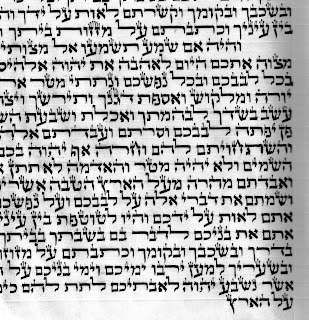Popular posts from this blog
Klaff Tanning question:
By
Rabbi Eli Gutnick
-
I received this question via email. I am not really a klaf expert, I was wondering if anyone could answer this question: Dear Rabbi Gutnick, I am writing to you because a good friend of mine has put the idea into my head that the klaf in my tefillin were not really tanned and therefore are not kosher. He referred me to Megilla 19a re diftera. From the research that I have done so far, it seems that the klaf that is used today is tanned only with a lime wash. On all of the tanning websites I’ve seen so far, they say that the lime doesn’t accomplish tanning but only the removal of the hair and some other pre-tanning effects. Would you be able to explain to me or refer me to a website that explains how the tanning process that is used today takes the hide out of the category of diftera? Thank you very much.
Rabbi Reuvain Mendlowitz clarifies his position on Ksav Chabad (and my final thoughts)
By
Rabbi Eli Gutnick
-
Last week I posted some thoughts in response to a public lecture given by Rabbi Reuvain Mendlowitz regarding Ksav Chabad (the Alter Rebbe's ksav). I felt he did not represent the issue fairly, and since I had received questions about it from a number of people I felt it made sense to write a general response. After I posted my response on this forum, Rabbi Mendlowitz reached out to me by email and we ended up having a respectful and productive email exchange regarding the relevant issues surrounding Ksav Chabad. His position is a lot clearer to me now, and I think he also took certain things on board that I clarified with him. The purpose of the Stam Forum (at least back in it's heyday before all the whats app groups took over) was to connect sofrim from around the world, to promote achdus and build bridges, as well as to offer support and advice. In that spirit, I felt I should write a follow up post, to clarify some of the issues and misconception...




I never saw such peis !!
ReplyDeleteI think that the pai of nafshechem, veasafta, letotafos [in the first mezuza] are a complete shinuy tzura and pasul.
nafshechem in the third also pasul.
The others maybe a shylas tinok and fixing !?
thanks for the interesting post.
A Peh with a runny nose? Wow, there are some Kutzot that are really exaggerated!
ReplyDeleteNotwithstanding, it appears to me that, one may erase part of the long kutz and it is not considered Chak-Tokhot.
Look at the Imrei Shefer (Klal Hei)... Even if the kutz descended all the way to the point that it touched base, one may still erase it as long as it looks like a kutz (i.e. it's a thin decender)
However, if it were to be thicker, then we may be dealing with a MEM setuma that has some decoration in the middle, in which case we may not erase it. That would be Chak Tokhot.
In our case, however, the kutzot do not reach anywhere near the base, (even though some are a bit thicker than a normal kutz) there is no confusion with a MEM Setuma.
Because of the above, it appears to me that, our letter PEH maintains its shape (as a Sephardi Peh). Thus, the extended projection may be reduced without it being considered Chak Tokhot.
Alberto,
ReplyDeletesome of these kotzim are thick and descend till [opposite] the base of the pei, I think this is clearly a shinuy tzura.
It looks like it may have been the Metayeg...
ReplyDeleteSefer S'fakot Hasofer brings a similar example (peh 15) but where the kots comes from the nekudah and actually touches the base. He brings down that this can be fixed in Tefillin or Mezuzot by scraping and this doesn't constitute Chok Tochot. He bases this on the Imrey Shefer rule 5. One therefore assumes that given it doesn't touch but is just a bit odd then repair is easily affected.
ReplyDelete